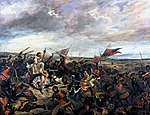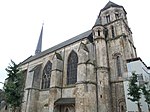Jardin botanique universitaire de Poitiers
The Jardin botanique universitaire de Poitiers (33 hectares) is a botanical garden and arboretum maintained by the University of Poitiers. It is located at 443 Route du deffend, Mignaloux-Beauvoir, Vienne, Nouvelle-Aquitaine, France, and open daily without charge. The garden is located on the former domaine du Deffend, which was purchased by the state in 1962 and in 1996 established as a regional plant heritage center. It was named a botanical garden in 2005 with the following missions: conservation of regional plants by developing thematic gardens (fruits, vegetables, etc.) education and public awareness supporting university research preservation of heritage collections of the University of Poitiers, including a herbarium dating to the nineteenth century,Today the garden contains two small forests (6 hectares), two ponds, a farm dating to the nineteenth century, and a 17th-century dovecote. Its arboretum contains 90 oak taxa, as well as a good collection of heritage apple trees. Other collections include local orchids, aquatic plants, and medicinal plants.
Excerpt from the Wikipedia article Jardin botanique universitaire de Poitiers (License: CC BY-SA 3.0, Authors).Jardin botanique universitaire de Poitiers
Rue du Prés des Mottes, Poitiers
Geographical coordinates (GPS) Address Nearby Places Show on map
Geographical coordinates (GPS)
| Latitude | Longitude |
|---|---|
| N 46.5565 ° | E 0.4092 ° |
Address
Rue du Prés des Mottes
Rue du Prés des Mottes
86550 Poitiers
Nouvelle-Aquitaine, France
Open on Google Maps







